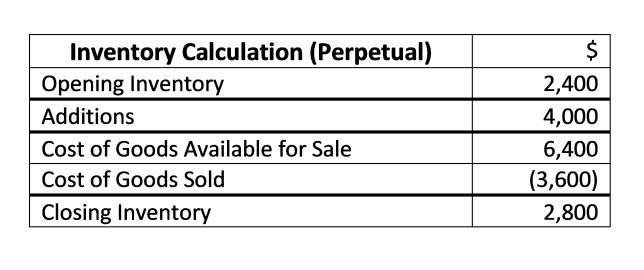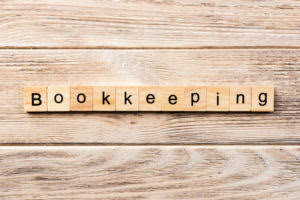Check Ordering FAQs: How to Order Checks through Bank of America
HOME Oxford Tennessee
February 8, 2024What Are Trade Receivables? Definition & Formulation
July 26, 2024
The account number serves as a unique identifier for an individual’s or business’s account within a financial institution. Typically ranging from 8 to 12 digits, this number ensures deposits are credited to the correct account. For instance, when funds are deposited, the account number guides the bank’s systems to allocate the money accurately.

Don’t Withdraw From Your Checking Account on This Day of the Week
If the deposit ticket is incomplete, bank tellers may experience some difficulties during processing funds to the customer bank account. A deposit ticket, often called a deposit slip, is a paper form used to document funds deposited into a bank account. It outlines the specific amount of cash and checks being added, serving as a record for both the depositor and the financial institution. Accurately completing this slip is important for ensuring funds are credited correctly and for maintaining clear financial records.
What Is the Most Important Thing That You Should Do After Filling Out a Deposit Slip?

To view check costs and explore a full catalog of checks and related products, log in to Online Banking to order checks or deposit tickets. As I was rushing out the door I thought to myself I should dig out a deposit slip or at least write on a sticky note where I want it deposited – but I didn’t take the time to do it. Some banks allow you to deposit money into your account through the ATM. In this case, you will most often not need to fill out a deposit slip. To make the job easier for the teller, make sure you write the deposit amount correctly in dollars and cents. Finally, sign the deposit slip if you want to get any cash back from your deposit.
Understanding Deposit Slips: The Importance of Properly Documenting Bank Deposits

The teller will process your deposit and provide a receipt. The teller may also give you a copy of your submitted deposit slip. If submitting your deposit to an ATM, be sure to include the deposit slip, along with all of the cash and checks listed on it, in a sealed envelope.
- Deposit slips offer several benefits, including serving as proof that the bank acknowledged receipt of your funds and maintaining a ledger for banks to keep track of daily deposits.
- Another great way to know how much you can spend is to check your available balance or ask a Bank Five Nine teller when the funds will become available.
- This is the total amount of currency (bills and coins) that you have for the deposit.
- The deposit slip provides the teller with the bank account number that should receive the funds.
- NCR stands for “no carbon required.” This paper allows deposit information to appear on multiple layers of paper.
- The consumer receives a receipt from the cashier after the deposit has been processed, which includes the deposit’s total amount, the date, and the time.
- Simply take a picture of the check on your phone then submit it as a deposit using your bank’s mobile app.
- Once the funds are available, you may withdraw the funds in cash and we will use the funds to paychecks you have written.
- Banks are required by federal law to keep records of deposits exceeding $100 for at least five years.
- No matter, if you’re a person or a business owner using your deposit tickets, will allow you to keep track of your finances and prevent any potential dispute.
- This feature benefits businesses that need to monitor deposits tied to specific projects or clients.
- Should you need to receive cash back, a “less cash received” section indicates this amount.
- Here are answers to common questions about checks and deposit tickets.
Then, write down your name and the account number where the check is being deposited into. Next, https://dev-lmssssite.pantheonsite.io/2020/10/13/reporting-requirements-of-contingent-liabilities/ include the amount of each check being deposited, with each check and check number on its own line. The first line requests the total amount of cash you’re depositing.
- These slips contain specific numbers that ensure deposits are processed accurately and securely.
- First, write the current date in the space provided at the top of the slip.
- Data retention policies necessitate accurate record-keeping.
- The deposit receipt proves that the deposit was made, but the receipt only shows the total of the deposit.
- Know Your Customer (KYC) guidelines mandate verification of account details.
- TRS has been renamed to the Collections Information Repository (CIR) effective January 2013.
Filling Out a Deposit Slip
OTCnet will allow certain users to perform more than one function. Pages 7-9 of the User Roles Guide provides an-depth explanation of Role Combinations for Deposit Reporting, Check Capture and FI Users. Additionally, your Deployment Specialist will be able to provide any specific OTCnet information related to your agency. Your representatives need to finish up the immediate store approval structure.
How Many Trial Balances Are There in the Accounting Cycle?
To fill out a deposit slip correctly, start by writing your account number in the designated space. Behind every successful deposit transaction lies a comprehensive set of bank policies and procedures. These are the rules of the game, designed to ensure accuracy, security, and compliance.
Cash: Handling Physical Currency
- This shift made it simpler for customers to complete their deposit information quickly and accurately while also making the bank’s job easier by ensuring all necessary data was provided.
- After itemizing all cash and checks, a subtotal line requires you to sum these amounts.
- Agencies will establish C-Keys in the Shared Accounting Module (SAM) for collection transactions that will be used to drive the appropriate values of TAS/BETC.
- Always ensure the deposit slip and any related documents have the correct date.
- The account number must be written at the bottom of the slip where indicated if the customer uses a deposit slip provided by the bank.
If you are only depositing money and do not want to get any cash, there is no need to sign the deposit slip. At the bottom of that section, you will see the subtotal box. Calculate the total amount of checks and cash you are depositing, respectively, and write those subtotals here. Depending on your bank, you might have to write your account number and name yourself, https://www.bookstime.com/articles/departmental-budget or it may already be printed on the deposit slip.

blank deposit slip
To make your layout, utilize an what is deposit ticket extraordinary program for deposit slips. Then begin adding the data you maintain that your clients should fill in. These incorporate record data, data, and bank office, and that’s just the beginning. Proceed to list each check individually in the checks section, writing the amount for each. Remember to endorse the back of each check before depositing.
Can I deposit cash and checks together on the same deposit slip?
However, it’s essential for customers to recognize the historical role and benefits that deposit slips have brought to banking transactions. A deposit ticket serves as a detailed record, it is used during the process of depositing funds into a bank account. This document is essential for ensuring the accuracy of transactions and maintaining proper financial records. Financial institutions provide the deposit ticket to their customers. Customers must accurately fill the deposit ticket with information about the currency they want to deposit.
